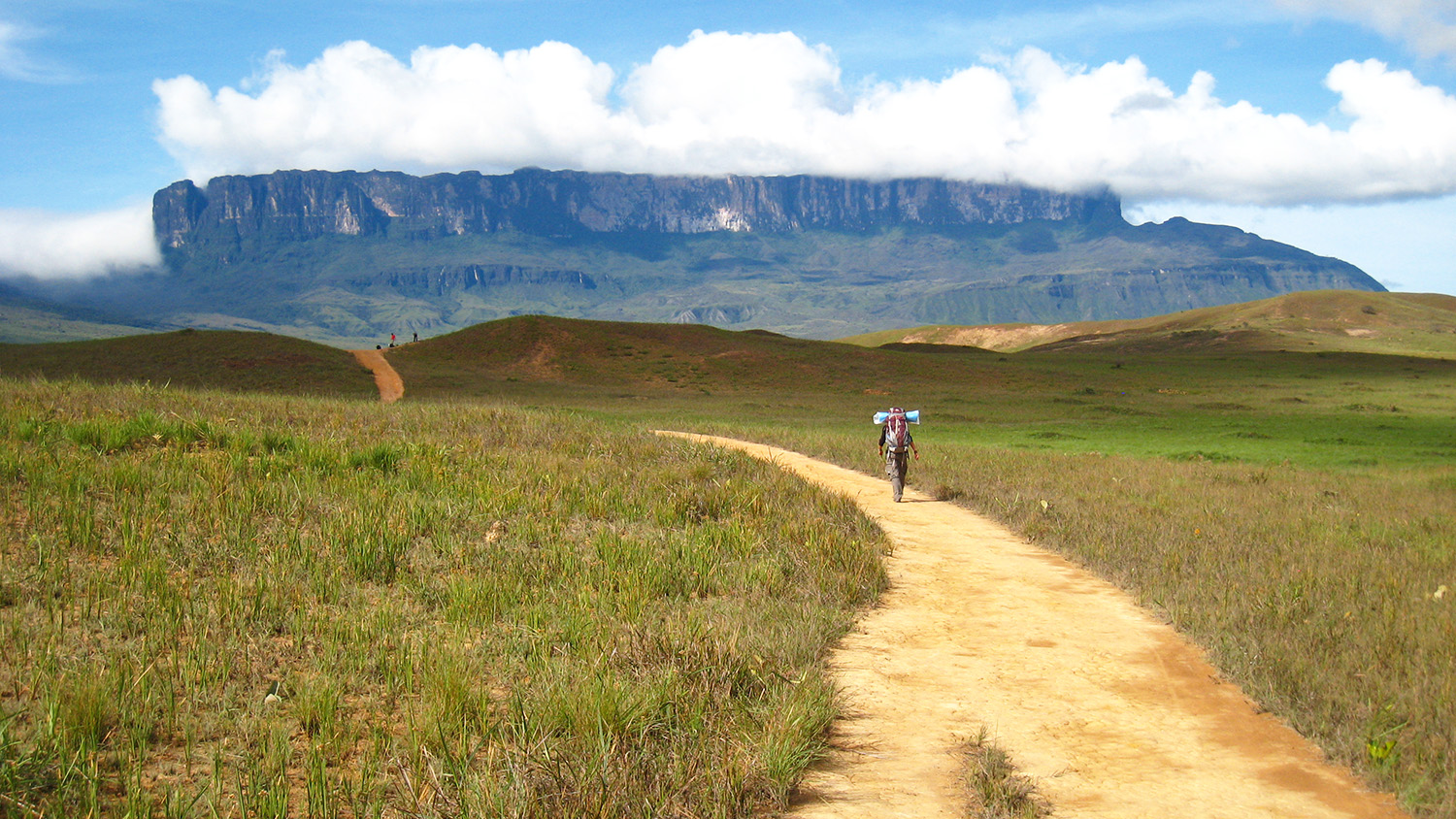Discover
Mount Roraima is the highest of a chain of tepui plateaus in South America. Thought to be forming a staggering 2 billion years ago in the Precambrian age and in its current state for an incredible 70 million years, Mount Roraima is considered one of the oldest geological formations on Earth. It is a triple border point of Venezuela, Brazil, and Guyana, and the majority of the mountain sits in Venezuela. This tabletop mountain is shrouded with mysteries and legends, thought by some to be the home to bizarre creatures and avoided by many indigenous people who call it tepui, or ‘house of gods’, named so as they believed that table-top mountains were meant to serve as houses for their gods. Long before Sir Walter Raleigh or any other European explorer, the mountain had a certain significance for the indigenous people in the region. The Pemon and Kapon natives see Mount Roraima as the remnant of a monumental tree that once held all of the fruits and tuberous vegetables in the world. The mythical trickster Makunaima felled the tree, unleashing a flood.
Waterfalls gush from the mountain due to its near-daily rainfall, and the top is carved by erosion from wind and water. Its unique habitat includes carnivorous plants and exquisite rare orchids, and the majority of the species residing here are unique to the mountain. Some are so similar to now-extinct plants and animals around the world that they are called living fossils. Hummingbirds, tiny parrots and nocturnal oilbirds call the incredible cloud forests of the plateau home. One traveler described seeing tiny black frogs who, isolated from evolution, run on all four legs instead of hop.
Around 20% of the table-top’s surface is covered by water, with unspoiled lakes, peat swamps, pink puddles dotting the surface. Fast-flowing rivers rush to what are quite possibly the oldest waterfalls in the world which fall from here. It was long-believed that there were no caves in or on Mount Roraima, however in 2003 one of the largest systems of quartz caves in the world was discovered here. Cueva Ojos de Cristal, or ‘the cave of crystal eyes’ is located on the Venezuelan side in the Canaima National Park. It continues for a staggering 11 kilometers (6.83 miles), and descends 72 meters (236 feet) below the surface. Billions of years ago underground rivers flowed through this and the other caves residing within the mountain.
Literary fans of Arthur Conan Doyle may already know that he used Mount Roraima as the inspiration for his novel “Lost World, a tale of modern dinosaurs”. For the history buffs, Sir Walter Raleigh, the English explorer, completed an expedition here in 1595.The first recorded climb was by Everard im Thurn, who walked up a forested ramp in 1884 to scale the plateau. His route is the same that hikers take today. Like many geological wonders, the number of visitors are limited and to get here you must hire a guide. The only way to the top of the mountain is from the Venezuelan side, where visitors trek for 6 grueling days to reach the summit. It is said that some of the most incredible hiking trails in the world are those that take you to the top of this gorgeous place.















